Hill Tribes
One of the excursions most practiced by tourists on holiday in Northern Thailand is a visit to the villages of the colorful ethnic minorities known as Hill Tribe. The Hill Tribe, ชาว เขา in Thai, is a term used to describe the various tribal peoples who live in the Northern Provinces, in both sides of the border between Thailand, Burma and Laos, a mountainous area known to be rich in dense forests. The six main tribal people in Thailand are the Akha, Lahu, Karen, Miao or Hmong, Mien or Yao and Lisu, each with a distinct language and culture, but all with a way of life untouched by the influences of the world modern. Within these categories there are sub-categories that divide further groups, such as Kayan or Padaung, which are a sub-category of Karen, known by everyone thanks to the strange custom of their women, the Long Neck or Giraffe Women, of bring heavy ornamental brass rings around their necks.Most of these populations are migratory peoples, who have their origins in the territories of the current China, which, because of their nomadic lifestyle or because of persecution, have over time shifted to the territories of Southeast Asia, Thailand, Burma, Laos or Vietnam. Not always where they are established, in their migrations, these ethnic populations have been well accepted by the natives. In Burma, for example, the communist regime has always pursued and decimates the Karen people who, from 1949, is waging a silent war to defend themselves against the brutal attacks of the troops in Rangoon and to request their autonomy. The Hill Tribe are traditionally farmers, who unfortunately use an agricultural system darkly harmful to nature. These people are used to use the slash and burn in the wooded areas as agricultural machinery, to derive later terrains fertile for their crops. Once exploited the land to leave, as soon as it is depleted of natural resources, and moving into new territories. The Thai government, worried by a practice so destructive to the environment and dangerous, both for fires caused both to the security of the border, it has made the decision to forcibly transferring many of Hill Tribe in stable territories, confined to villages in the mountains a life of forced isolation and with few civil rights, but at least not persecuted. In 2013 an article in the Bangkok Post quoted: "Nearly a million people of the people of the hills are still treated as criminals, since most the majority of them live in protected forests. Seen as threats to national security, to hundreds of thousands of them refused citizenship, even though many of these are indigenous people of this land". Right now the Hill Tribe, almost all of those in Thailand, living in mountainous terrain of the Northern Provinces. There are numerous hill tribe villages near Chiag Rai, Chiang Mai and Mae Hong Son, and there are, therefore, also many agencies that organize excursions and hiking tours. Many tours are excellent; others are disrespectful towards the local people. Customs and traditions of the village must be strictly observed, and only a good local guide really knows every village and its rules. If you want to visit a real village of Hill Tribe looking for a tour operator that follows the basic rules of Eco Tourism in Thailand, TEATA, Website: www.teata.or.th. A reputable tour operator, following the rules of eco-trekking cultures, organizes small groups of six or ten people and no more, with visits to villages not invasive to the natives, respect for their culture and their customs. The villages of Hill Tribe are many and that these tour operators a great choice of destinations, thus visiting the village usually not more than one or two times week. Some operators, unfortunately, organize groups of 30, sometimes 50 or more, visitors with an impact, against the villages visited, very invasive and has negative consequences for the local population, and then for the tourists themselves. There are villages that receive hundreds of visits every day of the week, upsetting completely uses the premises, transforming it into a tourist business and commercial, where you have to pay for a picture, and the villagers try to sell jewelry Made in China.Read More
The Bwa G'Naw, best known as Karen, Kariang or Yang, are the largest tribal community in Thailand, about 320,000 people, nearly half of the total population of the Hill Tribe, distributed in various villages in the provinces of Chiang Mai, Chiang Rai and Mae Hong Son. The Karen is the largest migratory people in Southeast Asia, 8 to 12 million people according to unofficial estimates, and probably the most persecuted. In Burma they are, for many years, victims of genocide by the communist regime, a silent war unknown to most, with Karen committed with weapons to defend themselves from persecution claiming its autonomy. In Thailand, the Karen are well tolerated by the central government, giving it the most fertile land in lower altitudes, allowed him to leave the agricultural technique of slash and burn, placing them in permanent villages where they live on agriculture and income from tourism. The Kayan, or Padaung are a sub-category of Karen and have become a tourist attraction, thanks to the strange custom of their women, the Long Neck or giraffe women, to bring heavy ornamental brass rings around their necks. The Kayan are endless because of persecution, from neighboring Burma, in the late 80s, moving into Thailand seeking refuge. Initially accommodated in refugee camps by the Thai government, soon they became a tourist attraction, generating considerable revenues from this. The Long Neck owe their name to the custom of wearing heavy brass rings around the neck that, unlike what people believe, due to a lowering of the clavicles and a compression of the rib cage, giving a false illusion of elongation of the neck. The custom is strictly voluntary on the part of women, since very young, choosing to wear the coils of brass rings. The spirals are, during the growth of the young, continually replaced with more long and heavy until having, in adulthood, also 25 turns of brass rings, with a truly considerable weight, more than 25 Kg. The spiral at this point not is more removable, also the replacement with the winding and unwinding procedures are complicated, the weakened neck is no longer able to properly support the head. Legend tells that in ancient times, betrayed husbands removed the spirals to unfaithful wives, causing death by suffocation. The custom of wearing these uncomfortable spirals is uncertain, some argue that they were a defense against attacks of tigers, others have speculated that served to render less attractive the women in the eyes of other tribes. The Long Neck argue that it is a custom purely aesthetic, sexual dimorphism is also a custom of many African tribes, and culture, adult women, with their long thin neck, reminiscent of the mythological figure of the dragon, which is one of symbols of folklore Kayan. At this moment a thousand Kayan lives in Thailand, most of them are in villages in Mae Hong Son, the largest is in Huay Pu Keng Pai River, some of them are in the Karen villages in the provinces of Chiang Rai and Chiang Mai. Read More
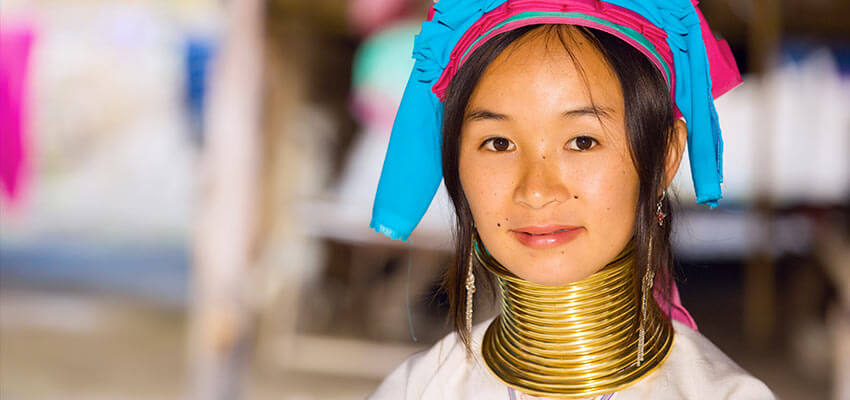
The Miao or Hmong are an ethnic group who are believed to be the original inhabitants of the valley of the Yellow River in ancient China. With the expansion of the Chinese Empire they were defeated and, because of persecution, forced to migrate more and more to the south, entering the territory of Thailand, Laos, Vietnam and Myanmar. After the wars in Vietnam and Indochina many of them have moved outside of Asia. The term to identify this ethnic group in Miao is used only in China, in Thailand are usually called simply Maew. According to the Hmong, those living outside China, the Chinese coined the name Miao, southern barbarians, to identify them in a derogatory tone, so do not like to be called that way.In China there is no problem because the language of the term Hmong, in Hmong-Mien language, is a syllable that does not exist in modern Chinese language. The Hmong are one of the major ethnic groups in Southeast Asia; estimates showing the presence of 9 million Miao in China, 1 million Hmong in Vietnam, Laos 460,000, 260,000 in the United States and 15,000 in France. In Thailand the Hmong community is estimated at least 150,000 people, living mainly in the mountainous regions of the north, a few are also within the nation. The Hmong have always been well integrated into Thai society, probably because one of the first arrived on the territories of the Kingdom. Read More
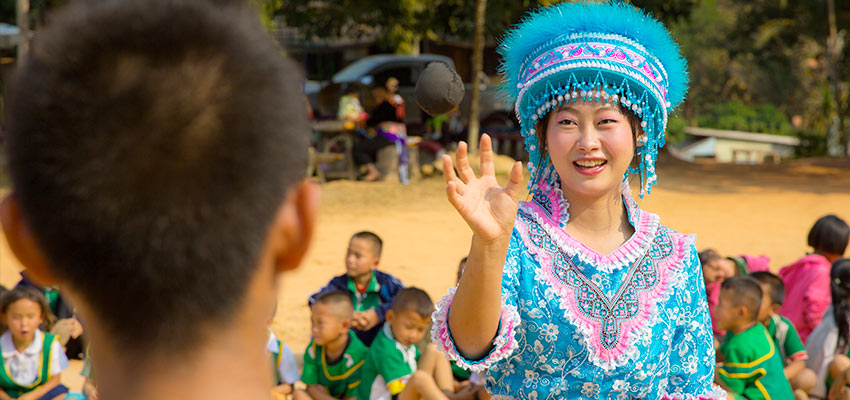
The Lahu are an ethnic group that comes from China, historically nomadic, they are pushed farther south, encroaching on the territory of Laos. The Lahu speak a language that descends from Loloish, a language that is a subset of the Tibetan-Burmese Language, and use the Latin Alphabet for writing. Among the Lahu the predominant religion is Polytheism, many of them over time embraced Buddhism and Christianity, between them the vocabulary has been enriched by words borrowed from the greek and latin. The Lahu, together with the Hmong and Mien, cooperated with the CIA during the civil war in Laos, known as the secret war. After the war, fearing reprisals, many of them have come to Thailand seeking political asylum, some of them, about a thousand were received in the United States, specifically in Visala, California. Currently estimated there are about 700,000 Lahu in Yunnan in China, 150,000 in Myanmar and 100,000 in Thailand.
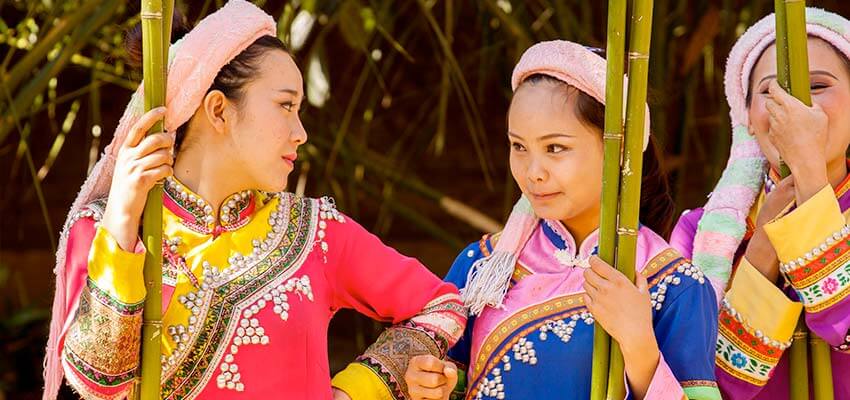
Yao, whose branch of majority are the Mien, are a group that is part of ethnic minorities Chinese. Yao, and Mien, practicing Yao-Taoism, a religion which comes down from medieval Chinese Taoism, some of them have converted to Buddhism and Christianity but still retaining their native traditions. The Mien are used to cover their heads with scarves blacks or red; women wear traditional clothes of bright colors adorned by silver decorations. Silver is a precious metal more appreciated by Mien, and is used as a dowry in marriages. In traditional marriage Mien intermediaries groom contact the parents of the bride, if the young man is pleasing is the contracted price of the dowry, usually between three and ten bars of silver valued at $ 100.The estimated number of Yao and Mien is about 3 million people, of whom about 450,000 live in Vietnam. One of them, those who lived in Laos and Vietnam at the time of the civil war in Laos, collaborated with the Americans, causing, after the war, hostile feelings from the Laotian government and were forced to migrate again to Thailand. During this time there are approximately 60,000 Yao and 40,000 Mien in the mountainous terrain of Northern Thailand.Read More
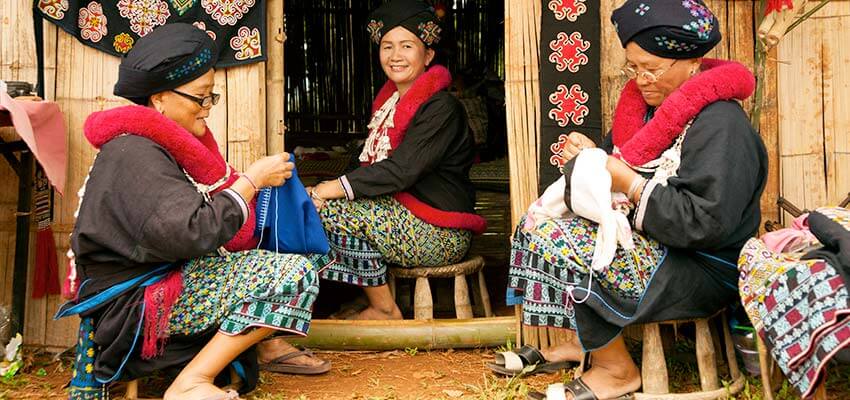
The Akha are a nomadic group related to the Akha-Hani, which originates from the Yunnan Province in China. In total it is assumed there are two or three million Akha and Akha-Hani, unofficial estimates, about 70,000 of them live in the mountains of Northern Thailand. The Akha, who speak a language in the branch Lolo-Yi group of Tibetan-Burmese, but curiously does not have a language of their traditional writing. Akha culture is represented by Akha Zang, the Akha way of life, a lifestyle decanted into religious songs, combining animism and shamanism. The Akha have a relationship of respect for the earth and all of nature and a large cult of the ancestors, the heads of families can often tell their family tree up to fifty generations before.
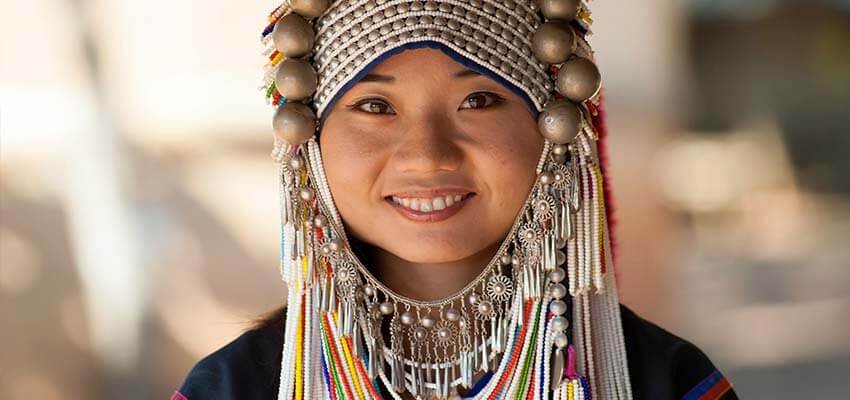
The Lisu are an ethnic group of Tibetan-Burmese origin who live in the mountainous regions of Thailand, Burma, China and south-western Indian state of Arunachal Pradesh. The Lisu ethnic group are less in Southeast Asia, in total 1,200,000 people, of which about 50,000 live in Thailand, usually in remote areas of the mountains. The Lisu speak a language that belongs to the Yi, or Ngwi, branch of the family Tibetan-Burmese. The religion practiced is partly animist, based on ancestor worship, partly shamanic. The traditional clothes are among the most beautiful and colorful of Hill Tribe, and very reminiscent of their native Tibetan.
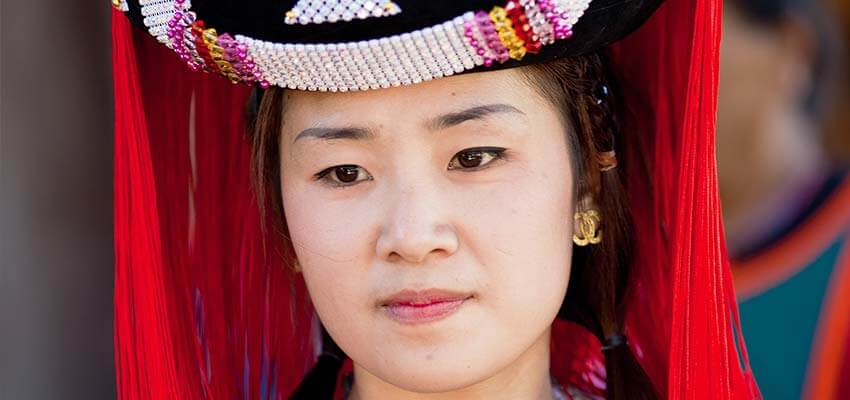
Hill Tribe Museum Chiang Rai
The Museum of the Tribes, in the center of Chiang Rai, serves to raise awareness and promote the culture of Hill Tribe. The visit to the Museum is recommended to anyone who intends to undertake a trekking tour to the Hill Tribe villages, the purpose of the museum is just to raise awareness among tourists so that knowledge of local customs and traditions of the tribes prior serve to form a more responsible tourism and with a less negative impact as possible on the Hill Tribe. The museum is run by the Population and Community Development Association, PDA, and is supported by the Thai Tourist Agencies, ATTA, and the Pacific Asia Travel Association, PATA. The proceeds of the museum are used for conservation initiatives of these communities or for practical help, how to fund the construction of pipes for drinking water or for scholarships for young people. Inside the museum you can also book the best tours to the villages, profits always go to the tribal communities. They are well accepted donations and collect even basic necessities for the community, such as blankets useful in winter, when temperatures in the high mountains touch Zero.The museum tour starts with audiovisual on tribal life and continues through exhibits of clothing, tools for hunting and fishing, folk instruments and other anthropological objects of the six Hill Tribe. In the museum there is a section dedicated to the ancient history of opium, as has come to Asia, its cultivation and the impact it has had on the Hill Tribe. Admission to the museum costs only 50 THB, with a voucher for a soft drink to use in the restaurant below Cabbages and Condoms Restaurant. The restaurant is managed by the nonprofit PDA, and its profits are used to promote family planning and prevention of HIV/AIDS in Thailand. Do not miss this visit will be useful to you, for a better respect of tribal people, and your small contribution will be helpful to the Hill Tribe to preserve their culture. Open from 8:30-18:00Location: 620/25 Thana Lai Road, Tambon Wiang, Chiang Rai.
Doi Hua Mae Kham, Chiang Rai
Doi Hua Mae Kham, 1,850 meters above sea level, has a mountain to the north of Chiang Rai near the border with Myanmar, home to several hill tribe villages. Most of the local population is members of the Lisu Tribe and fewer in number than those of the tribe Akha, Hmong and Lahu. This area is fascinating in the period of November and December when the wild sunflowers dwarves, Dok Bua Tong in Thai, which also give its name to a village are in full bloom. To reach the villages you have to follow the rural road that leads from Mae Chan to Baan Thai Thoet and Baan Huai, about 3 hours, with a final section that runs along a steep precipice creepy. To get to Doi Hua Mae Kham from Chaing Rai take the Asian Highway AH2 heading north, after about 32 Km in Mae Chan turn left into Rural Road N° 1130 in Mae Salong direction and then turn left again on Rural Road N° 1138 leading to Doi Hua Mae Kham, total distance 100 km Location: Amphoe Mae Chan, Chiang Rai.
Doi Tung, Chiang Rai
Doi Tung, 1,389 above sea level, is located about 60 Km north of Chiang Rai's Mae Sai district, which is the northernmost province, a few kilometers from the border with Myanmar. The rural road leading to the summit winds through fantastic scenery in nature. On the way to the summit are some villages of hill tribe Akha and Lahu, as the village of Pha Mi Akha one of the most accessible for tourists from all over the province of Chiang Rai. On top of the mountain is the temple of Wat Phra Maha Chinathat Chao, better known as Wat Phra That Doi Tung. Since this temple is probably the most fantastic view of all the temples of Thailand To reach the Doi Tung, follow the Highway N° 1 for about 50 Km, then at Huai Khrai turn left on Rural Road N° 1149 in which only 15 Km leads directly to the summit. Location: Tambon Huai Khrai, Amphoe Mae Sai, Chiang Rai.
Mae Kok River, Chiang Rai
Mae Kok River is one of the attractions of the province of Chiang Rai. The stretch of river flowing from Tambon Tha Ton, the district where the Mae Nok River comes Thailand, up in Chiang Rai is home to several Hill Tribe villages. Tourist agencies organize different types of cruises along the Mae Kok starting from the district of Tha Ton, particularly from the villages of Baan Tha Ton or Baan Ruam Mitrapap. The cruises on rafts of bamboo are excursions that usually last three days and two nights, with costs ranging from 8,000 to 12,000 THB per a raft that lead from 2 to 6 persons, and provide overnight in the villages of Hill Tribe. The quiet ride winds through the thick vegetation that borders the cool waters of the Mae Kok; they are provided for continuous stops at the villages of the hill tribes Akha or Iko, Lisu and Karen or trekking on elephant back in equipped camps. On Mae Kok can make even the White Rafting with trips lasting several days, with living in the villages along the river, usually departures from Baan Ruam Mitrapap in the district of Tha Ton. Directly from Chiang Rai you can venture in the surf along the Mae Kok, to visit the villages of Hill Tribe village, renting individually the Long Tail or turning to agencies that organize half-day tours on motorboats larger, with destination Baan Tha Ton, cost 350 THB. The departure pier is in Rop Wiang district at north of the city, just opposite the Dusit Island Resort and not far from Wat Phra Kaew. To reach the district of Tha Ton to Chiang Rai following the Asian Highway AH2, Phaholyothin Road, heading north for about 30 km, then turn left on Highway N° 1089, also reported as N° 107, which takes around 50 km leading to Tambon Tha Ton. Location: Tambon Tha Ton, Amphoe Mae Ai, Chiang Rai.
Golden Triangle, Chiang Rai
Only 8 km from Chiang Saen is the area known as the Golden Triangle, where the Ruak River flows into the Mekong River and together form the border between Thailand, Myanmar and Laos. Until a few years ago this area was the center of opium production, which was a source of livelihood for farmers being the province of Chiang Rai, one of the most rural areas of Thailand. In recent years the Thai government has curbed the phenomenon, converting agricultural production in other cultures and relegating him across the border into the territory of Laos and Myanmar. From Chiang Saen you can rent boats to visit Golden Triangle going up the Mekong. To reach Chiang Saen follow the Asian Highway AH2 for about 30 km to the north, then turn right on Highway N° 1016 and continue for another 32 Km before you come unto the city. Location: Amphoe Chiang Saen, Chiang Rai.
Tribal Museum Chiang Mai
The Tribal Museum is an ethnographic museum showing the lifestyle of the nine Hill Tribe Northern Thailand: Karen or Kariang, Miao or Hmong, Mien or Yao, Lisu, Akha, Lahu, Lau, Thin, and Khamu. Each of the Hill Tribe has its own identity, culture and beliefs, the museum displays art objects that allow you to learn more about these tribes. In the covered part of the museum displays tribal clothes, jewelry and other artifacts, with projections of video presentation on tribal life in northern Thailand. In a large garden, waterside, are visible remains of ancient tribal huts, rebuilt in an attractive environment. Once a month, the Tribal Museum is location of a fascinating market, where each of the different tribes sells handmade clothes, artisan products and traditional food of their culture. The museum can be reached easily by following the Canal Road, which runs alongside the canal of Chiang Mai. Location: Ratchamangkla Park, Chotana Road Muang Chiang Mai. Tel. 053 210872 Hours: Open Monday to Friday from 9:00 to 16:00 Entrance fee: Free admission, donations appreciated.
Baan Tong Luang Eco-Agricultural Village, Chiang Mai
Baan Tong Luang Village is the destination closer and easier to visit, from Chiang Mai, to see the Hill Tribe. The exhibition village is designed for simple tourist use, does not represent the real life of the hill tribe, but it is a good opportunity to observe and photograph some members of these ethnic groups. In Baan Tong Luang Village are individuals belonging to groups Hmong/Maew, Akha and Karen, between them also women Kayan, or Padaung, the famous Long Neck or Giraffe Women. To reach the village of Baan Tong Luang from Chaing Mai follow the road N° 107 until Mae Rin, about 13 Km, after turn left on the N° 1096 in which 10 km will bring you to the village. Location: Amphoe Mae Rim, Chiang Mai.
Doi Inthanon National Park, Chiang Mai
Doi Inthanon National Park, in northern Thailand, includes the mountain known as the roof of Thailand. Located 58 kilometers south-west of Chiang Mai, on the way to Mae Sariang was established in 1972 and has an area of 482 square kilometers. In the park there are two visitor centers for information, one is at the office and one is on the summit of Doi Inthanon, there are areas available for camping, parking, restaurants and rest rooms. For the night are some bungalows within 3 km from the park headquarters, and a youth hostel near the Mae Pang Waterfall. Inside the park there are villages of Hill Tribe Karen and Hmong/Maew, for a total of about 4,500 people. To reach the park from Chian Mai follow the Road 108 up to Chom Thong, then continue turning right on Route 1009, after 36 km there is the headquarters of the Park, in total about 100 Km. Location: Ban Luang, Amphoe Chom Thong, Chiang Mai.




